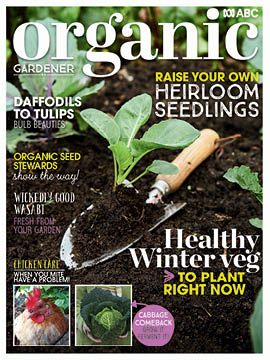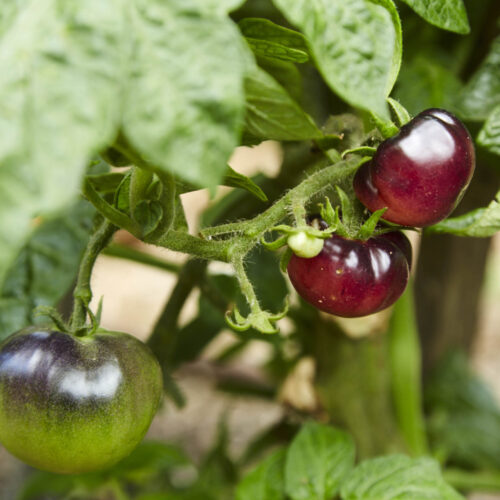Grow your own root vegies for winter
2022-04-28T01:22:28+10:00
Karen Sutherland suggests some super-nourishing root vegies for you to plant during this winter from carrots to sugar beets
What would a winter soup or roast dinner be without rich, filling and nutritious root vegetables? Definitely missing a vital ingredient, so plant them now and they’ll be ready to harvest when the cold sets in.
Generally, root vegies like fairly light, sandy soils with a fine tilth, good drainage and with stones, sticks and lumps removed. This prevents roots from splitting or growing crooked or generally not being able to penetrate the soil. Soil should be acid to neutral with some fine compost sprinkled over the surface. Most root vegetables like to be grown from seed sown directly into the soil. Try these three root vegies with a difference.
Carrot ‘All Seasons’ (pictured above)
Daucus carota
- Height 20 cm
- Width 10 cm
- Sun/Shade Full sun
- Time to harvest 65-80 days
CLIMATE ZONE: Subtropical Arid/semi-arid Warm temperate Cold temperate
‘All Seasons’ is a relatively quick-growing, medium-sized carrot (up to 20cm long) with good colour and a rich flavour. It is biennial but usually grown as an annual. They have good disease resistance and are suitable for warmer climate planting. In the tropics, they are best planted in winter. Loosen soil to 30cm deep, breaking up all lumps, incorporating compost. A soil pH of 6.5–7.5 is best. Sow seeds in lines 15cm apart, cover with 5mm finely sieved soil or coir peat and firm gently into place. The small seeds dry out easily, so can be covered with wet hessian bags or similar, re-wetting once or twice per day. Check seeds each day and once they germinate, in 5–7 days, remove hessian and protect from birds with wire netting to allow plants to establish. Thin plants to 5cm apart for best development. Harvest once roots are well developed. For seed saving, select a few good plants and leave to flower and set seed, collecting once dry.
Turnip ‘Gold Ball’
Brassica rapa
- Height 30 cm
- Width 20 cm
- Sun/Shade full sun
- Time to harvest 45-65 days
CLIMATE ZONE: Subtropical Arid/semi-arid Warm temperate Cold temperate
Turnips are one of the oldest cultivated vegetables and milder varieties, such as ‘Gold Ball’, ‘American Purple Top’ and ‘Golden Globe’, will give a sweet, subtle flavour. Keep plants well-watered to prevent bitterness, which can also be caused by high temperatures. ‘Gold Ball’ has golden skin, pale-gold flesh and taste best when the globes are about 75mm in diameter. Loosen soil to 30cm deep, breaking up all lumps and incorporate compost. A soil pH of 6.2–7.2 is best. Sow seeds direct, in lines 1cm deep, cover with 10mm finely sieved soil or coir peat and firm gently in place. Keep seeds well-watered until they germinate. In the tropics, seeds are best planted in winter. Thin plants to 20cm apart as they grow. Mulch developing plants and keep well-watered to encourage growth. This variety stores well. Young leaves can be harvested and used in salads, as cooked greens or in stir-fries. Use turnips in soups, slow-cooked dishes, or serve mashed with other root vegetables.
Sugar beet
Beta vulgaris
- Height 40 cm
- Width 30 cm
- Sun/Shade Full sun
- Time to harvest 80-100 days
CLIMATE ZONE: Subtropical Arid/semi-arid Warm temperate Cold temperate
Sugar beet is almost unknown in Australia but grown all over the world as a source of sugar. It is vegan-friendly due to animal-free processing (unlike cane sugar which is often whitened using bone char from cows). With around 15 per cent sugar content, sugar beets are often used as animal fodder but can be grown and eaten like other beets. Loosen soil to 30cm deep, breaking up all lumps and incorporate compost and well-rotted manure. A soil pH of 6–6.5 is best. Sow seeds direct 15mm deep, in lines 50cm apart, firming gently. Soak seeds overnight in water or diluted seaweed solution to help germination. Keep soil damp. In the tropics seeds are best planted in winter. Thin plants to 15cm apart as they grow. Mulch developing plants and keep well-watered. Use young leaves in salads, or as cooked green. For best flavour, pick beets at about 400g (they can reach 2kg). Use as you would beetroot. If you want to make sugar from beets, go to: instructables.com/Making-Sugar-From-Sugar-Beets/.
If you want to checkout root vegies to grow in other seasons, click here
There’s more information about crops to plant for a healthy harvest in winter and beyond in our Autumn 2022 issue (OG 123). There’s a selection of back issues available here — you can also subscribe and get the most recent issues delivered to your door!









